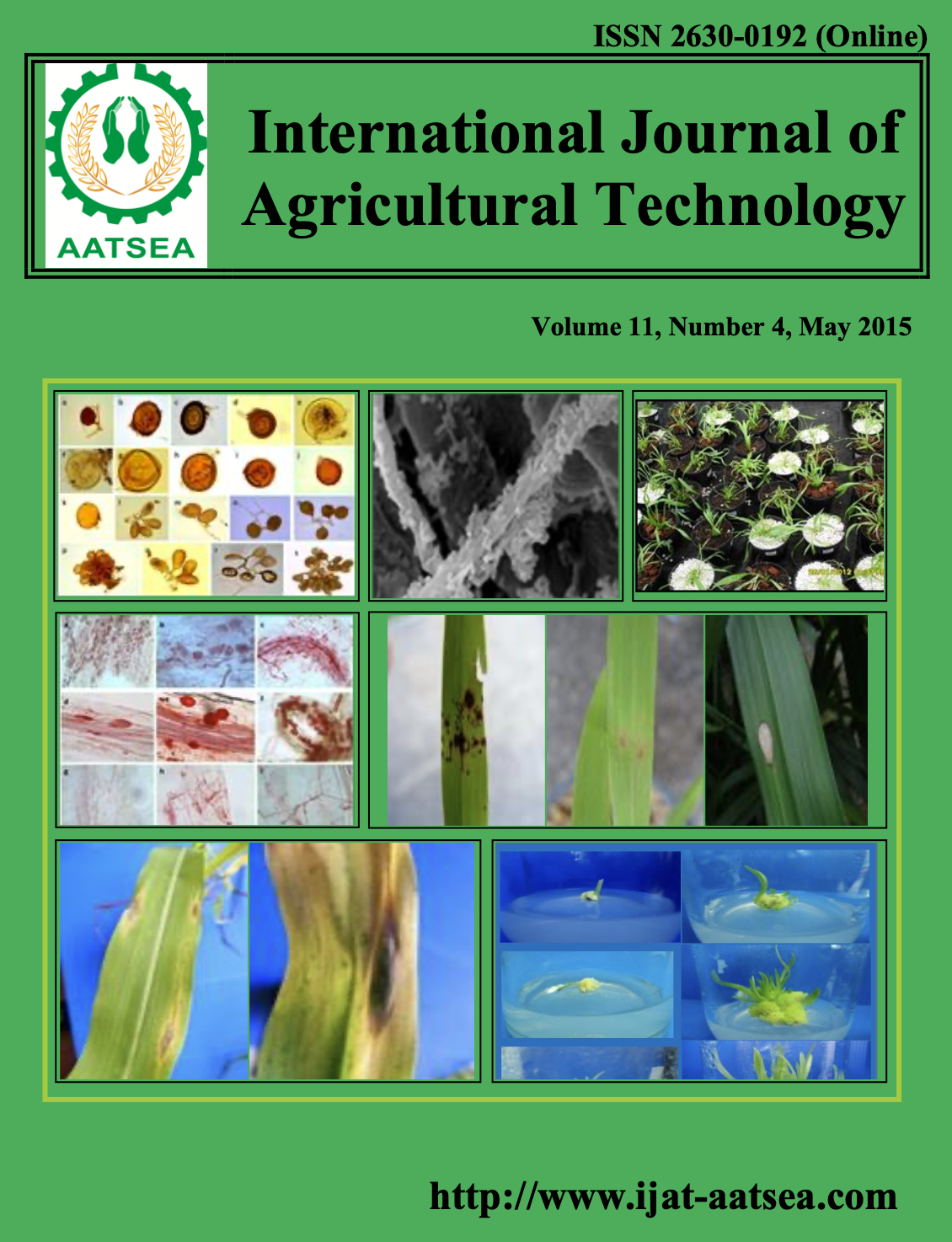Efficacies of some fungicides and antagonists in controlling northern corn leaf blight disease
Main Article Content
Abstract
Article Details

This work is licensed under a Creative Commons Attribution-NonCommercial-NoDerivatives 4.0 International License.
References
Abebe, D. and Singburaudom, N. (2006). Morphology, culture, and pathogenicity variation of Exserohilum turcicum (Pass) leonard and suggs isolates in Maize (Zea Mays L.). Kasetsart Journal 40:341-352.
Bowen, K. L. and Pedersen, W. L. (1988). Effects of propiconazole on Exserohilum turcicum in laboratory and field studies. Plant Disease 72:847-850.
Chaemsawang, C., Inthanu, W., Khumchang, T. and Inthana, W. (2003). Disease control of damping off in tomatoes which was caused by Pythium aphanidermatum and used the fresh fungus Trichoderma harzianum applied onto seed and added in planting material. Proceedings of the 6th - a decade of National Department of Plant Protection, Khon Kaen, 24-27 November 2546. pp. 349-360.
Choosak, J. and Thiwa, P. (2003). Corn economic crop. Faculty of Agriculture, Kasetsart University. pp. 54-73.
David, D. V., Chernin, L. and Höfte, M. M. (2009). Differential effectiveness of Serratia plymuthica IC1270-induced systemic resistance against hemibiotrophic and necrotrophic leaf pathogens in rice. BMC Plant Biology 9:9.
Harlapur, S. I., Kulkarni, M. S. and Wali, M. C. (2007). Evaluation of plant extracts, Bio-agents and fungicides against Exserohilum turcicum (Pass.) leonard and suggs. Causing Turcicum Leaf Blight of Maize. Karnataka Journal of Agricultural Sciences 20:541-544.
Kurze, S., Bahl, H., Dahl, R. and Berg, G. (2001). Biological control of fungal strawberry diseases by Serratia plymuthica HRO-C48. Plant Disease 85:529-534.
Lipps, P. E. and Mills, D. (2002). Northern corn leaf blight. Retrieved from http://ohioline.osu.edu/ac-fact/pdf/0020.htm.
Nene, Y. L. and Thapliyal, O. N. (1979). Fungicides in plant disease control. New Delhi: Oxford and IBH publishing house. pp. 163.
Pataky, J. K. (1992). Ralationships between yield of sweet corn and Northern leaf blight caused by Exserohilum turcicum. Phytopathology 82:370-376.
Schwartz, H. F. and David, H. G. (2005). Sweet corn XXXVI, Helminthosporium leaf blight. high plains IPM guide, a cooperative effort of the University of Wyoming.
Sitthikul, C. (1996). Diseases of field crops. Department of Plant Pathology, Faculty of Agriculture, Chiang Mai University. pp.114-130.
Sommat, T. (2000). Chemical control for plant diseases. Department of Plant Pathology. Faculty of Agriculture, Kasetsart University, Bangkok. 371 pp.
Vincent, J. M. (1927). Distortion of fungal hyphae in the presence of certain inhibitions. Nature 59:850.
Villa-Carvajal, M., Querol, A. and Belloch, C. (2006). Identi-fication of species in the genusPichia by restriction of the internal transcribed spacers (ITS1 and ITS2) and the 5.8S ribosomal DNA gene: identification of Pichia species by 5.8S-ITS rDNA RFLP. Antonie van Leeuwenhoek 90:171-181.
Vincent, J. M. (1927). Distortion of fungal hyphae in the presence of certain inhibitions. Nature 59:850.
Watson, A. (2007). Managing northern leaf blight in sweet corn. NSW Department of Primary Industries. Primefact No. 235. Retrieved from http://www.dpi.nsw.gov.au/primefacts


